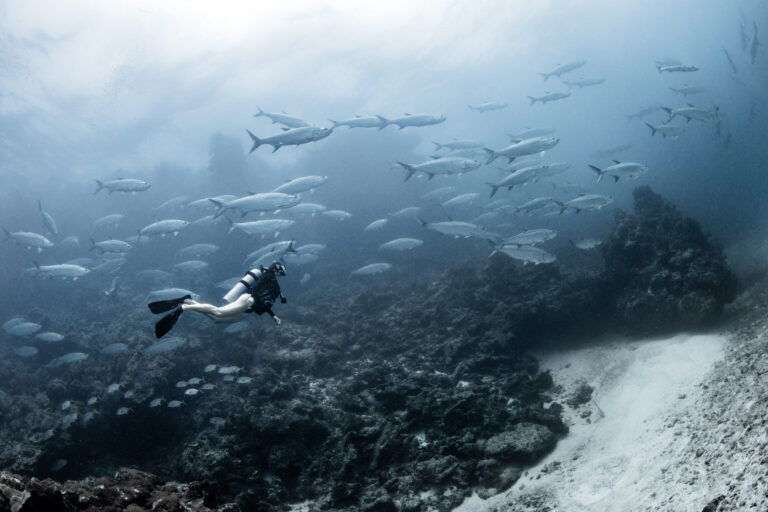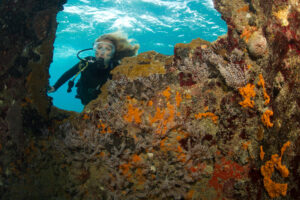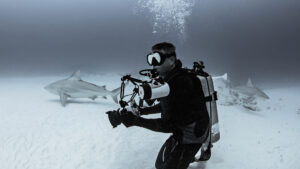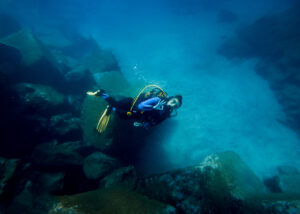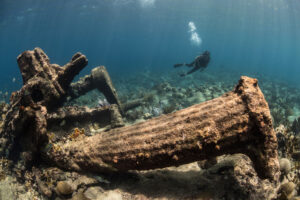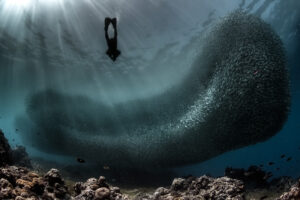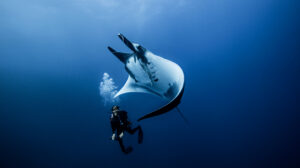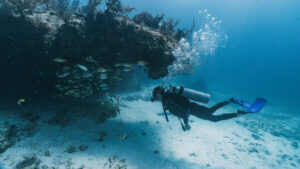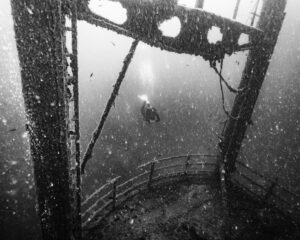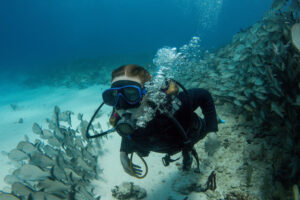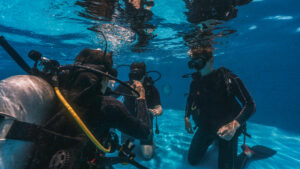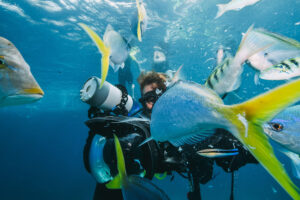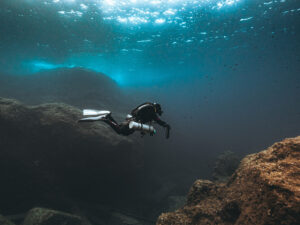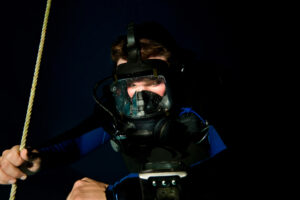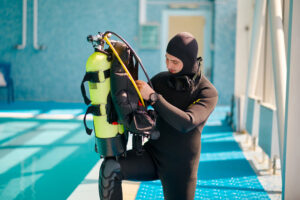What is Weight in Scuba Diving?
Weight is a fundamental concept in scuba diving, playing a crucial role in a diver’s ability to achieve neutral buoyancy and maintain control underwater. In the context of scuba diving, weight refers to the additional mass that divers carry to counteract the buoyancy of their bodies and equipment. Proper weighting is essential for divers to descend, ascend, and maintain depth with ease, ensuring a safe and enjoyable underwater experience. This article delves into the physics of weight in water, the types of weights used, how to calculate the required weight, and the importance of weight placement and safety considerations.
Physics of Weight in Water
Weight in scuba diving is intricately linked to the principles of physics, particularly buoyancy and Archimedes’ principle. Buoyancy is the upward force exerted by a fluid that opposes the weight of an object submerged in it. Archimedes’ principle states that an object submerged in a fluid experiences a buoyant force equal to the weight of the fluid it displaces. This principle is vital for understanding how divers achieve and maintain neutral buoyancy underwater.
When a diver enters the water, their body and equipment displace a certain volume of water. The buoyant force acting on the diver is determined by the weight of this displaced water. If the diver’s weight and the weight of their equipment are less than the buoyant force, the diver will float. Conversely, if their weight exceeds the buoyant force, they will sink. Neutral buoyancy is achieved when the weight of the diver and their equipment exactly matches the buoyant force, allowing the diver to remain suspended at a particular depth without floating up or sinking down.
The density of water also plays a crucial role in determining buoyancy. Saltwater is denser than freshwater, providing more buoyant force for the same volume of water displaced. Therefore, divers need to adjust their weights depending on whether they are diving in saltwater or freshwater. Understanding these physical principles helps divers make informed decisions about their weighting to achieve optimal buoyancy control.
Purpose of Weights in Scuba Diving
Weights are an indispensable part of a diver’s gear because they help counteract the positive buoyancy of the human body and diving equipment, allowing divers to descend, maintain depth, and ascend safely. Without the correct amount of weight, divers would struggle to control their buoyancy, making it difficult to execute a smooth and controlled descent or maintain stability underwater.
Achieving neutral buoyancy is essential for a variety of reasons. First, it enhances a diver’s control and stability underwater, allowing for effortless movement and maneuvering. This is particularly important for activities such as underwater photography, where maintaining a stable position is crucial. Second, proper buoyancy control reduces the risk of accidental contact with the delicate marine environment, minimizing damage to coral reefs and other underwater ecosystems. Lastly, maintaining neutral buoyancy is critical for safety, as it allows divers to manage their ascent and descent rates effectively, preventing issues such as rapid ascents that can lead to decompression sickness.
It is important to strike a balance between being underweighted and overweighted. Being underweighted makes it difficult to descend and stay at the desired depth, while being overweighted can lead to increased air consumption and difficulty maintaining buoyancy. Proper weighting ensures that divers can enjoy their underwater experience safely and comfortably.
Types of Weights Used in Scuba Diving
There are several types of weights used in scuba diving, each with its own advantages and applications. The most common type is the weight belt, which is worn around the waist and holds individual weights. Weight belts are popular because they are easy to adjust and can be quickly removed in an emergency. However, they can sometimes shift during a dive, affecting buoyancy control.
Integrated weights are another common option, typically incorporated into the buoyancy control device (BCD). These weights are securely held in pockets within the BCD, offering a more streamlined profile and reducing the risk of shifting. Integrated weights are convenient because they distribute weight more evenly across the diver’s body, enhancing comfort and stability. However, they can be more challenging to remove quickly in an emergency.
Ankle weights are used less frequently but can be beneficial for divers who have difficulty maintaining horizontal trim. These small weights are strapped around the ankles, helping to counteract the buoyancy of the legs and improve overall balance. While useful in specific situations, ankle weights should be used with caution, as they can affect swimming efficiency and increase drag.
Soft weights, which are made of small lead shot contained in a durable fabric pouch, are another option. These weights conform to the body’s shape better than solid weights, providing a more comfortable fit. They can be used in weight belts or integrated weight systems and are favored for their versatility and comfort.
Each type of weight has its own set of advantages and disadvantages, and divers often choose based on personal preference, diving conditions, and specific needs. Understanding the different types of weights and their uses is crucial for selecting the right weighting system.
Calculating Required Weight
Determining the correct amount of weight to use is essential for achieving neutral buoyancy. Several factors influence the required weight, including the diver’s body weight, the type and thickness of the wetsuit, and whether the dive is in saltwater or freshwater. A basic understanding of these factors helps divers calculate the appropriate amount of weight to carry.
The first step in calculating required weight is to consider the diver’s body weight. A general guideline is to use about 10% of the diver’s body weight in weights. For example, a diver weighing 70 kg (154.3 lbs) might start with 7 kg (15.4 lbs) of weight. However, this is just a starting point, and adjustments may be needed based on other factors.
Wetsuit thickness also affects buoyancy. Thicker wetsuits provide more buoyancy because they contain more neoprene, which traps air. Divers wearing thicker wetsuits will need more weight to counteract this increased buoyancy. For instance, a 5 mm wetsuit may require an additional 2-3 kg (4.4-6.6 lbs) of weight compared to a 3 mm wetsuit.
Saltwater is denser than freshwater, providing more buoyant force. As a result, divers need more weight when diving in saltwater. A common adjustment is to add 2-3 kg (4.4-6.6 lbs) more weight when diving in the ocean compared to freshwater. Divers can test their buoyancy in a controlled environment, such as a pool, before adjusting their weights for different diving conditions.
Fine-tuning weight during a dive is often necessary. Divers should perform a buoyancy check at the surface by holding a normal breath and floating at eye level with an empty BCD. If they sink while holding their breath, they are likely correctly weighted. If they float higher, they may need to add more weight. It’s important to make gradual adjustments and test buoyancy throughout the dive to ensure comfort and control.
Weight Placement and Distribution
Proper weight placement and distribution are as important as the amount of weight carried. Incorrect placement can lead to poor buoyancy control, increased air consumption, and discomfort during the dive. Understanding the principles of weight distribution helps divers achieve a balanced and stable position underwater.
The goal of weight placement is to distribute weight evenly across the diver’s body, maintaining a horizontal trim. This means the diver should float in a flat, face-down position when neutrally buoyant. Proper weight distribution reduces drag, conserves energy, and enhances overall control.
Weight belts should be worn snugly around the waist, with weights evenly spaced. This prevents the belt from shifting during the dive, which can affect buoyancy and trim. Integrated weights should be placed in the designated pockets of the BCD, ensuring they are secure and balanced. Some BCDs have trim weight pockets located higher on the back, which help fine-tune trim and balance.
Ankle weights, if used, should be applied cautiously. They can help counteract the buoyancy of the legs but may also increase drag and affect swimming efficiency. Divers should experiment with small amounts of ankle weight to see if it improves their trim without causing other issues.
It is also important to consider the overall distribution of weight between the front and back of the body. Placing too much weight on the front can cause a head-down position, while too much weight on the back can lead to a feet-down position. Adjusting the placement of weights, moving them higher or lower on the body, or using trim pockets can help achieve a balanced, horizontal position.
Safety Considerations
Safety is paramount when it comes to weighting in scuba diving. Improper weighting can lead to a range of issues, from difficulty in controlling buoyancy to increased risk of decompression sickness. Understanding and addressing the common mistakes associated with weighting is crucial for a safe diving experience.
One of the most common mistakes is being overweighted. Carrying too much weight can make it difficult to maintain neutral buoyancy, leading to increased air consumption and fatigue. Overweighted divers may find themselves sinking uncontrollably, especially during ascents, which can be dangerous. To avoid this, divers should perform buoyancy checks and make small adjustments to their weight until they find the optimal balance.
Being underweighted is another issue that can affect safety. Underweighted divers may struggle to descend and maintain depth, which can be particularly problematic in currents or during safety stops. They may also find themselves ascending too quickly if they lose control of their buoyancy. Ensuring that enough weight is used to achieve neutral buoyancy throughout the dive is essential.
Emergency procedures related to weighting should be well understood by all divers. In situations where a rapid ascent is necessary, such as in the event of an emergency, divers may need to ditch their weights to become positively buoyant and ascend quickly. It is important to know how to release weights quickly and effectively. Divers using integrated weight systems should familiarize themselves with the release mechanisms and practice using them.
In addition to proper weighting, maintaining good buoyancy control through practice and experience is key to safe diving. Divers
should continually assess and adjust their buoyancy during the dive, being mindful of their breathing patterns and the impact of depth changes. Regular training and refresher courses can help divers maintain their skills and stay safe underwater.
Key Takeaways
Proper weighting is essential for achieving neutral buoyancy and maintaining control while scuba diving. Understanding the physics of weight, choosing the right types of weights, calculating the required amount, and distributing it correctly are all critical aspects. Ensuring safety through proper weighting practices and emergency procedures enhances the overall diving experience and minimizes risks.

